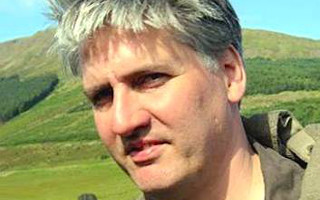The Focused-Casual continuum in interaction design
Lecturer: Roderick Murray-Smith
Event type: Guest lecture
Event time: 2014-05-09 16:15 to 17:00
Place: Auditorium T1, Aalto CS Building, Konemiehentie 2, Espoo
Web page: Helsinki Distinguished Lecture Series on Future IT
Description:
The next lecture in the Helsinki Distinguished Lecture Series on Future Information Technology will be given by Prof. Roderick Murray-Smith from the University of Glasgow. The lecture will be followed by cocktails.
The event is free of charge and open to all interested in the leading research in information technology.
Please register at https://elomake.helsinki.fi/lomakkeet/51242/lomake.html by Monday, May 5, 2014.
Abstract
There has been increasing public debate about the way mobile devices capture the focus of their user’s attention, to the detriment, and in some cases danger of those around them. I will describe the focused–casual continuum, a framework for describing interaction techniques according to the degree to which they allow users to adapt how much attention and effort they choose to invest in an interaction conditioned on their current situation. Casual interactions are particularly appropriate in scenarios where full engagement with devices is frowned upon socially, is unsafe, physically challenging or too mentally taxing. I will describe how novel sensing approaches accompanied by machine learning and signal processing for inference will allow us to go beyond direct touch, and will enable wider use of casual interactions, which will often be ‘around device’ interactions, and look at the role of control theory and information theory in analysis of such systems.
About the Speaker
Roderick Murray-Smith is a Professor of Computing Science at Glasgow University, in the “Inference, Dynamics and Interaction” research group, and is the Director of SICSA, the Scottish Informatics and Computing Science Alliance. He works in the overlap between machine learning, interaction design and control theory. In recent years his research has included multimodal sensor-based interaction with mobile devices, mobile spatial interaction, Brain-Computer interaction and nonparametric machine learning. Prior to this he held positions at the Hamilton Institute, NUIM, Technical University of Denmark, M.I.T., and Daimler-Benz Research, Berlin. He works closely with the mobile phone industry, having worked together with Nokia, Samsung, FT/Orange, Bang & Olufsen and Microsoft. He is a member of Nokia’s Scientific Advisory Board. He has co-authored three edited volumes, 19 journal papers, 16 book chapters, and 76 conference papers.